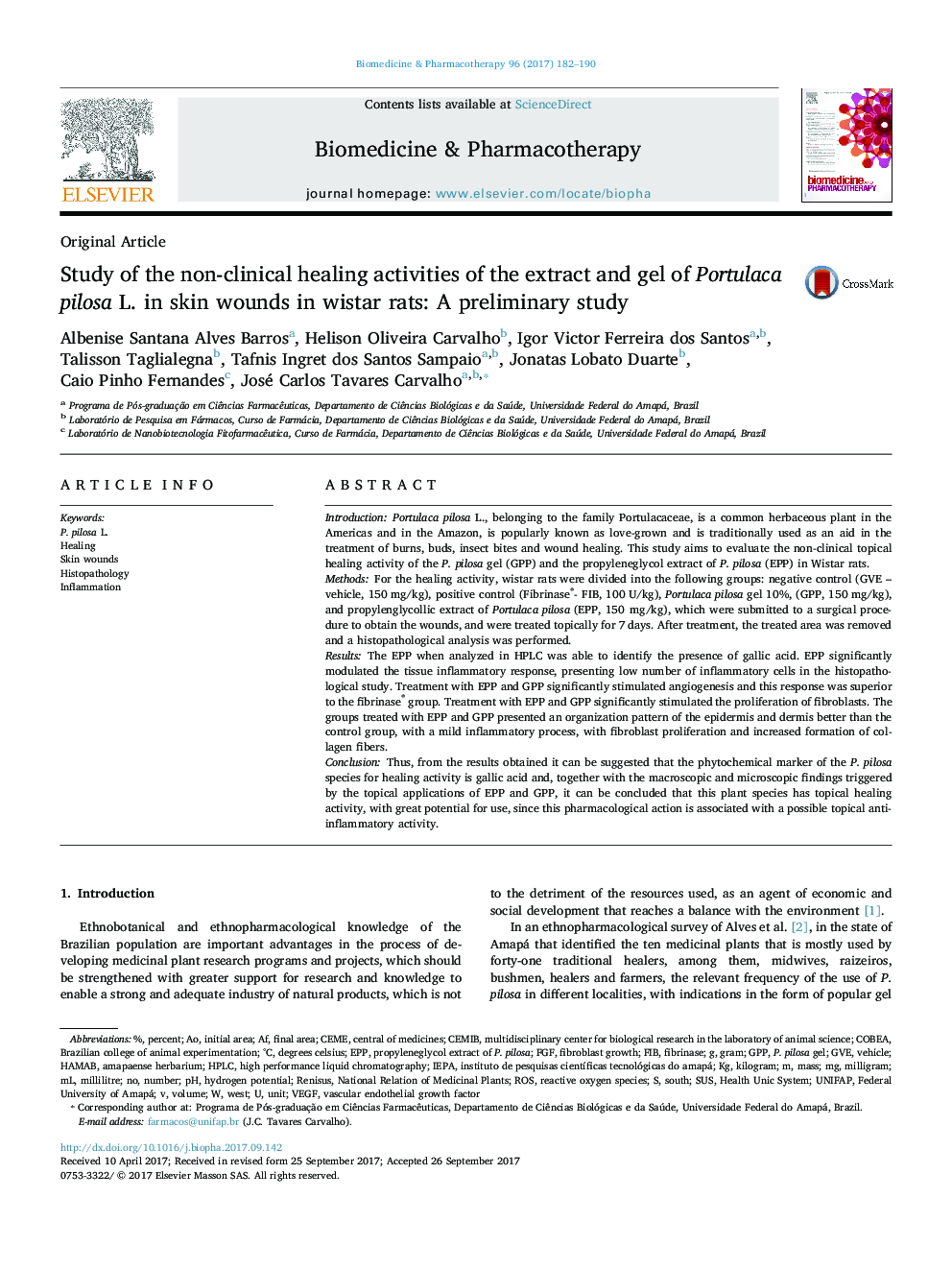| کد مقاله | کد نشریه | سال انتشار | مقاله انگلیسی | نسخه تمام متن |
|---|---|---|---|---|
| 5552442 | 1557946 | 2017 | 9 صفحه PDF | دانلود رایگان |

IntroductionPortulaca pilosa L., belonging to the family Portulacaceae, is a common herbaceous plant in the Americas and in the Amazon, is popularly known as love-grown and is traditionally used as an aid in the treatment of burns, buds, insect bites and wound healing. This study aims to evaluate the non-clinical topical healing activity of the P. pilosa gel (GPP) and the propyleneglycol extract of P. pilosa (EPP) in Wistar rats.MethodsFor the healing activity, wistar rats were divided into the following groups: negative control (GVE - vehicle, 150 mg/kg), positive control (Fibrinase®- FIB, 100 U/kg), Portulaca pilosa gel 10%, (GPP, 150 mg/kg), and propylenglycollic extract of Portulaca pilosa (EPP, 150â mg/kg), which were submitted to a surgical procedure to obtain the wounds, and were treated topically for 7 days. After treatment, the treated area was removed and a histopathological analysis was performed.ResultsThe EPP when analyzed in HPLC was able to identify the presence of gallic acid. EPP significantly modulated the tissue inflammatory response, presenting low number of inflammatory cells in the histopathological study. Treatment with EPP and GPP significantly stimulated angiogenesis and this response was superior to the fibrinase® group. Treatment with EPP and GPP significantly stimulated the proliferation of fibroblasts. The groups treated with EPP and GPP presented an organization pattern of the epidermis and dermis better than the control group, with a mild inflammatory process, with fibroblast proliferation and increased formation of collagen fibers.ConclusionThus, from the results obtained it can be suggested that the phytochemical marker of the P. pilosa species for healing activity is gallic acid and, together with the macroscopic and microscopic findings triggered by the topical applications of EPP and GPP, it can be concluded that this plant species has topical healing activity, with great potential for use, since this pharmacological action is associated with a possible topical anti-inflammatory activity.
Journal: Biomedicine & Pharmacotherapy - Volume 96, December 2017, Pages 182-190